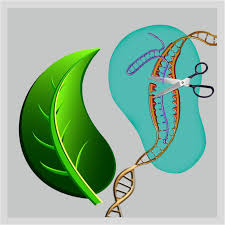Gene Editing and Plant Biotechnology
Gene editing technologies have emerged from the broader field of agricultural biotechnology, sometimes referred to as the gene revolution of agriculture. Gene editing allows for single gene-specific mutation, while standard mutagenic breeding resulted in tens of thousands of gene mutations. Mutagenesis has been used in the development of new crop varieties since the 1930s, while newer more accurate gene editing tools like CRISPR have been available for the past 5 years.
What is gene editing?
Gene editing is a technique that allows plant breeders to make very specific changes to how a gene functions, meaning that the gene can be changed to express at a higher or lower level. As the science of gene editing advances, it creates uncertainty in some jurisdictions regarding how to regulate these technologies, are they GM crops? Conventional crops? Or something altogether new?
Technologies of gene editing have become commonly applied in the development of a broad spectrum of plant varieties. Agricultural gene editing has not just been limited to large-scale commodity production but the development of new varieties of fruits and vegetables. I believe it’s vital that the global regulatory framework view these new technologies or ‘innovations’ as simply the evolution of traditional plant breeding. Regulatory systems for innovative products that are process-based struggle to keep up with scientific advancements compared to product-based systems. Timeliness is an important aspect of innovation.
How long is something an ‘innovation’?
Genetically modified herbicide tolerant canola came onto the commercial market 25 years ago as an innovation which producers and markets have widely accepted. After regulating herbicide tolerance in canola varieties for 25 years, it seems appropriate that regulators would review the existing regulatory requirements. Should new gene editing canola varieties that are herbicide tolerant, be subject to the same regulations as GM canola? The question becomes, at what point does an innovation stop being an innovation and become the standard? The continuation of regulation for herbicide tolerant varieties as novel, may currently be lacking the scientific rationale that it originally did. Given the thorough risk assessments of herbicide tolerant canola and the safe commercialization, a logical evolution of the regulations would be to treat these canola varieties as conventional varieties, subject to minimal risk assessment requirements. Canola varieties with new traits, such as drought tolerance or insect resistance, should be subject to a comprehensive risk assessment as a plant with novel traits.
To date, Canada has approved two gene edited herbicide tolerant varieties of canola, one in 2013 and one in 2014. Both varieties underwent risk assessment as plants with novel traits (PNTs) prior to being approved. If herbicide tolerant varieties of canola have undergone a risk assessment and been safely approved for 25 years, is there a scientific rationale for treating herbicide tolerant canola as novel? Innovations are given 20 years of patent protection according to Canada’s laws on intellectual property. After 20 years, the patent holder has no further rights. If the Canadian government recognizes an innovation is worth intellectual property rights for 20 years, why would it still require this innovation to be regulated after the 20 year period expires?
There’s no stopping science, but how does regulation keep up?
As the pace of scientific advances, which there are no signs of slowing, it’s important that science-based regulations keep pace. The 25 years of regulating canola that is herbicide tolerant have generated a substantial level of information and knowledge. If 25 years of regulating one specific trait in a specific commodity have not quantified any change in risk, then this evidence and experience can be leveraged to revise the risk assessment requirements for this trait and crop.
The cost of not keeping regulations current is that they will begin to impose unnecessary costs on public and private technology developers. This can have two effects, it will slow the pace of research, reducing innovation or it will drive investments in agriculture innovations to other countries with more current regulatory requirements.


